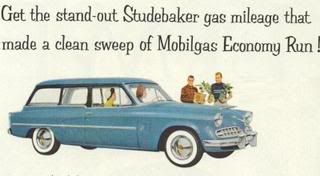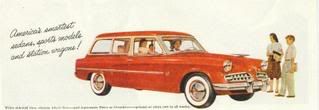My name is Sean and I'm an auto mechanic in Palm Springs, CA. I have a 1964 Studebaker Gran-Turismo Hawk that I inhereted from my Godfather since 1987. The car itself is located in the L.A. area sitting in the backyard of my relative''s house. It hasn't been started and driven since 1992, but it was moved few times around the house. I have talked to other proud Studebaker owners and they told me some few proceedures, but never worked on their own car. I would like someone, who has worked on these kind of cars to give me an advice on the actual proceedures on getting this car started and running. I believe there is some lacking of specific instructions. Here is my questions to those instructions.
1. What type of motor oil my 289 engine will use? Is there a specific brand for it?
2. What type of tranny oil my auto transmission require?
3. What type of battery the car uses?
4. What type of spark plug wires and does any auto parts carries them?
5. What are the proceedures on hooking up a battery
6 What are the proceedures in engine timing afte installing new plugs and wires and distributor cap?
7. Can someone show me a diagram for the vacuum hoses, if equipped?
I will be in L.A. this coming Thanksgiving to look at the car's condition and will start the proceedures this coming Christmas. Thank you very much for your time and will be looking forward to hear from you. Email me at sean_rich@yahoo.com, if you have full details in the proceedures to get the 289 engine with an auto trans running.
Sean
Sean Rich D. Villariasa
1. What type of motor oil my 289 engine will use? Is there a specific brand for it?
2. What type of tranny oil my auto transmission require?
3. What type of battery the car uses?
4. What type of spark plug wires and does any auto parts carries them?
5. What are the proceedures on hooking up a battery
6 What are the proceedures in engine timing afte installing new plugs and wires and distributor cap?
7. Can someone show me a diagram for the vacuum hoses, if equipped?
I will be in L.A. this coming Thanksgiving to look at the car's condition and will start the proceedures this coming Christmas. Thank you very much for your time and will be looking forward to hear from you. Email me at sean_rich@yahoo.com, if you have full details in the proceedures to get the 289 engine with an auto trans running.
Sean
Sean Rich D. Villariasa
 )]
)]

 I think Nate mean't to say Negative (-) terminal FORWARD when posts are "to" engine and Positive (+) Post to rear of car. The other way around and you would have a 24F (Ford Batt.)
I think Nate mean't to say Negative (-) terminal FORWARD when posts are "to" engine and Positive (+) Post to rear of car. The other way around and you would have a 24F (Ford Batt.)

Comment